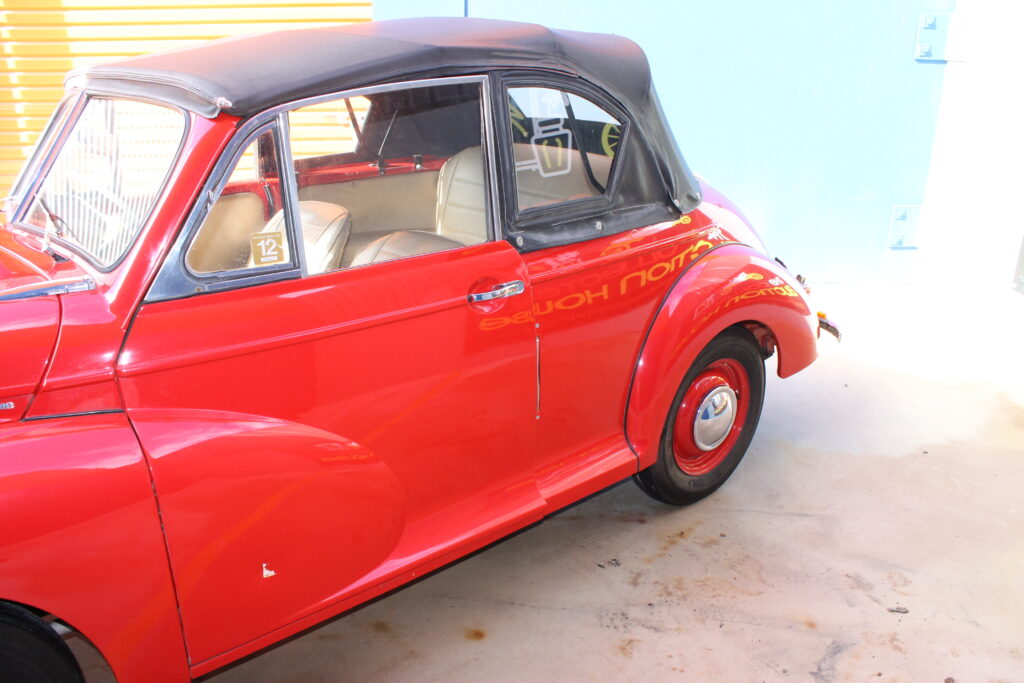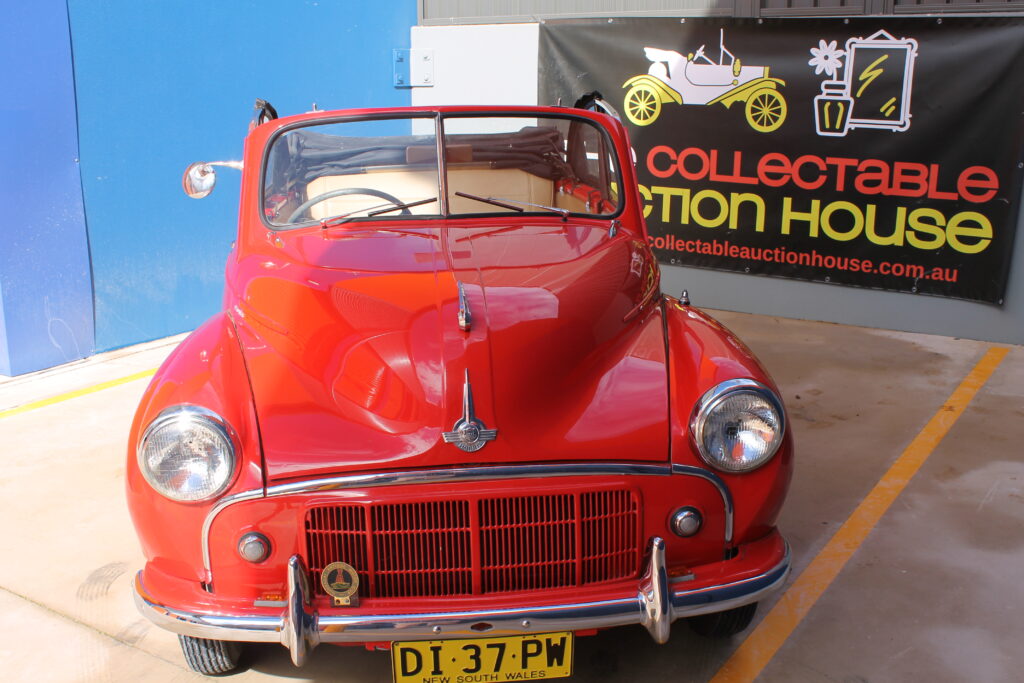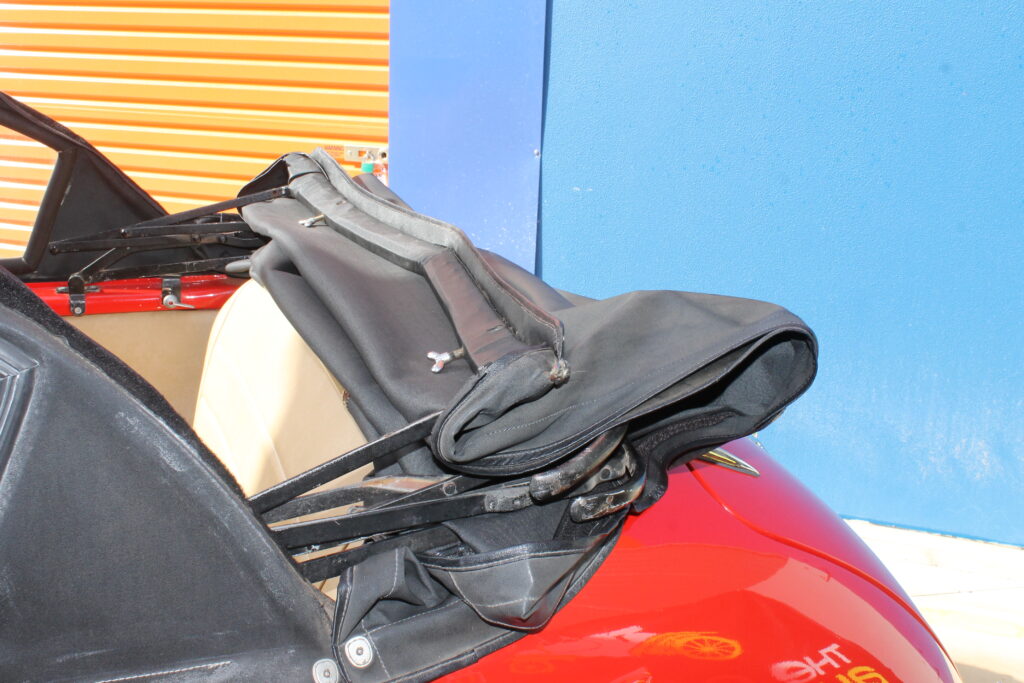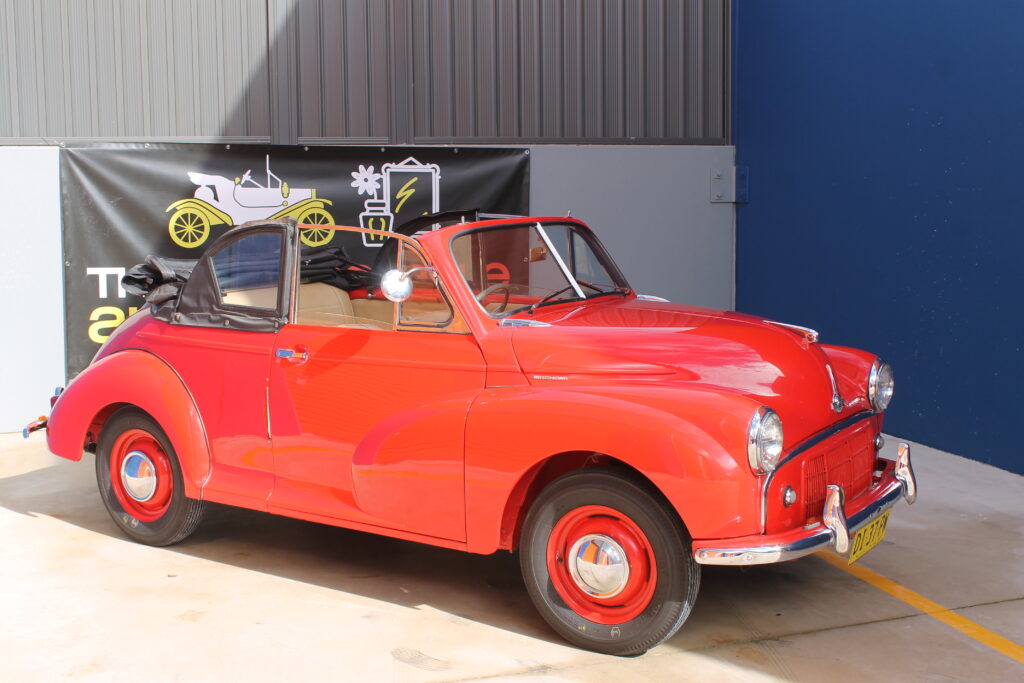
$16,500
1952 Morris Minor Convertible
The Morris Minor is an economy car produced by British marque Morris Motors between 1948 and 1971. It made its debut at the Earls Court Motor Show, London, in October 1948. Designed under the leadership of Alec Issigonis, more than 1.6 million were manufactured in three series: the Series MM (1948 to 1953), the Series II (1952 to 1956), and the 1000 series (1956 to 1971).
Initially available as a two-door saloon and tourer (convertible), the range was expanded to include a four-door saloon from September 1950. An estate car with a wooden frame (the Traveller) was produced from October 1953 and panel van and pick-up truck variants from May 1953. It was the first British car to sell over a million units, and is considered a classic example of automotive design, as well as typifying “Englishness”.
The Minor was conceived in 1941. Although the Nuffield Organization was heavily involved in war work and a governmental ban existed on civilian car production, Morris Motors’ vice chairman, Miles Thomas, wanted to prepare the ground for new products to be launched as soon as the war was over. Vic Oak, the company’s chief engineer, had already brought to Thomas’ attention a promising junior engineer, Alec Issigonis, who had been employed at Morris since 1935 and specialised in suspension design, but he had frequently impressed Oak with his advanced ideas about car design in general.
Issigonis’ overall concept was to produce a practical, economical, and affordable car for the general public that would equal, or even surpass, the convenience and design quality of a more expensive car. In later years he summed up his approach to the Minor; that he wanted to design an economy car that “the average man would take pleasure in owning, rather than feeling of it as something he’d been sentenced to” and comfortable to drive for inexperienced motorists.
The Series MM type Minor was produced from late 1948 until early 1953. It included a pair of four-seat saloons, two-door and (from 1950) a four-door, and a convertible four-seat Tourer. Although the Minor was originally designed to accept a flat-4 engine, late in the development stage it was replaced by a 918 cc (56.0 cu in) side-valve inline-four engine, little changed from that fitted in the early 1930s Morris Minor and Morris 8, with a bore of 57 mm but with the stroke of 90 mm and not 83 mm, and producing 27.5 hp (20.5 kW) and 39 lb⋅ft (53 N⋅m) of torque. The engine pushed the Minor to just 64 mph (103 km/h) but delivered 40 miles per imperial gallon (7.1 L/100 km; 33 mpg‑US). Brakes were four-wheel drums.
When production of the first series ended, just over a quarter of a million had been sold, 30% of them the convertible Tourer model.
OUR CAR
How about this stunning little red convertible!
An uncovered barn find in Western NSW, a one lady owner and 14,600 miles on the clock.
After 32 years of non-use this old girl deserved a detailed makeover ready to make her ready for the next 73 years.
This rare 1952 split windscreen model can only appreciate in value. Now fully renovated, ‘Ruby Red’ has just rolled out of the workshop including new tyres after a complete mechanical overall including lights & indicators, speedo, fuel gauge, wiper blades, brakes, suspension, and a whole lot more.
It’s an original Australian delivered Morris Minor with a side valve 918cc engine that runs like a dream.
The colour combination of vibrant red with cream trim makes the car pop.
Mechanically it drives very well, with a nice turn of speed from the engine.
We are extremely proud to offer this car through The Collectable Auction House.
Please contact us to arrange an inspection – you will not be disappointed! Car is sold registered in NSW until the 6th February 2025 but is ideal for Historic registration

























